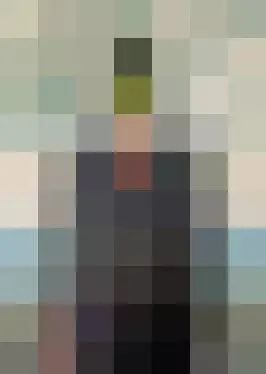Can you still recognize it when you type it like this? Pick a few pictures, let’s try it out:



Nutshell er generally thinks this is a better guess⬆️








In general, if you are familiar with the original picture, you can still see it a little bit. Portraits are easier to see than landscapes…_(:з”∠)_
If you know the answer, you can write it in the comments. See who can get it right first!
[Tips that are not small at all] If you are also severely short-sighted, then holding your phone away and taking off your glasses will work wonders…
mist in front of you
Some paintings that were originally “hazy” were related to the artist’s eye disease. In 1922, the 82-year-old Impressionist painter Claude Monet wrote to a friend: ” My deteriorating eyesight made everything around me look like a fog. The world I see at the moment is very beautiful, which is exactly what I want to express in the painting. I am very happy now.”
In this year, Monet completed one of his most representative paintings “Japanese Bridge and Water Lily Pond”. This painting is dominated by dark yellow and dark red, and the lines are blurred, making it almost impossible to see the outline of things.

And in 1899, before Monet suffered from eye disease, he painted another painting with the same background. This one is a far cry from his later one: the detail of this painting is sharper and the use of color more delicate.

This layer of fog obscuring Monet’s world is cataract , an eye disease that is commonly seen in middle-aged and elderly people, and can now be improved by transplanting intraocular lenses. However, in Monet’s day, cataract surgery was not so advanced. At first, Monet worried about the risks of surgery, but eventually removed the lens in 1923. He is said to be able to see ultraviolet light after the operation, so the water lilies he repainted were more blue than before. However, this claim has also been questioned because he has painted blue water lilies before.

Water lilies painted by Monet at different times (before and after cataract surgery) | Skeptical Artist
Cataract surgery removes the lens because clouding of the lens can cause vision loss. The lens is like the lens of a camera to our eyes. In normal health, it is clean and clear , refracting light and focusing it on the retina. The lens contains water and lens proteins to maintain its normal function. The structure of crystallin, like other proteins in our body, can be damaged by external factors such as oxidation and ultraviolet radiation.

Causes of cataracts
The wear and tear of a person’s life over the years causes these proteins to dissociate and accumulate in the lens, eventually forming a thin film like accumulated dust, resulting in blurred vision . The accumulation of crystallin can also cause yellowing of the eyes, just like putting a layer of yellow gauze in front of the eyes, leading to the illusion of color perception.
Monet is not the only painter whose painting style is affected by cataracts. American female painter Mary Cassatt is a painter on par with Impressionist masters such as Monet and Degas. But compared to Monet, her painting style focuses more on the depiction of lines, outlines and details. Cassatt was diagnosed with cataracts at the age of 68. Unfortunately, due to a shortage of medical personnel during World War I, she was not able to receive timely treatment and was forced to give up painting at the age of 71.

Painting by Cassatt when he was 36 years old. Cassatt’s precise detailing can be seen in the folds of the hat and skirt.

Cassatt’s paintings after suffering from cataracts. Compared to her earlier work, this work is relatively limited in color and detail
Author: Window Knocking, Rebecca
an AI
Mondrian laughed without saying a word…

This article is from Nutshell and may not be reproduced without authorization.
If necessary, please contact [email protected]

This article is reproduced from: http://www.guokr.com/article/462426/
This site is for inclusion only, and the copyright belongs to the original author.